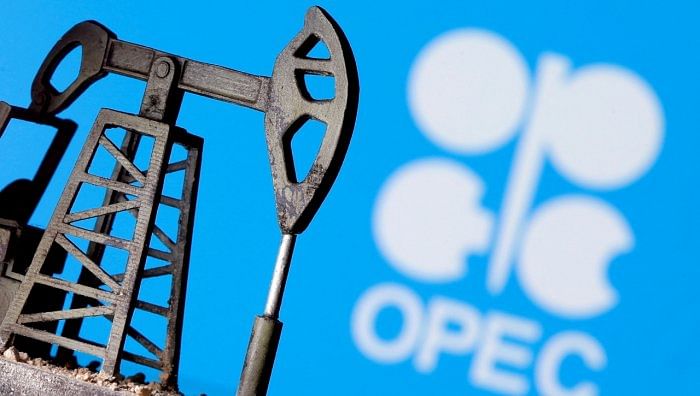
Powerful energy cartel, Organization of Petroleum Exporting Countries (OPEC) along with Russia and its allies put oil markets in a spin by deciding in early April to cut output. Prices of the benchmark Brent crude shot up from $73 to $86 per barrel within a day.
This reversed the softening trend of prices that had brought prices below $80 a barrel for the first time after a year. The trigger for the fall had been fears of contagion after the collapse of the Silicon Valley Bank in the United States and the takeover of Swiss flagship bank Credit Suisse by UBS.
The Saudi Arabia-led cartel was clearly concerned over the falling market and showed its clout by resorting to a production cut that dismayed emerging economies such as India. It managed to push prices to a level considered adequate to bring in sizable revenues for member countries. The output cut of 1.16 million barrels is the second such move over the past six months. The previous reduction in production quotas for cartel members — two million barrels per day — came into effect in November 2022. Along with the latest curbs, the fall in output is now equivalent to about 3.7 per cent of global oil output.
Also Read | Why is OPEC cutting oil output?
For India, which needs to import 85 per cent of its crude consumption, this is bad news. The scenario has been troubling enough over the past year with the domestic economic recovery creating more demand for petroleum products and, thus, a need for more crude imports. It was the outbreak of the Ukraine war in February 2022 that caused prices to firm up for about six months to an average of $100 per barrel. A softening trend fortunately began in August 2022 and continued for another seven or eight months. But prices remained higher than comfort levels for developing economies at $82-95.
The outcome for India has been a significant rise in the oil import bill despite increasing purchases of Russian crude. Purchase of crude oil has cost a total of $211 billion in the last fiscal year. This is a big leap from the $120 billion spent in 2021-22, according to the Petroleum Planning and Analysis Cell of the petroleum ministry.
The impact of higher fuel prices is bound to increase inflationary pressures on the economy. It can upset the apple cart for the Reserve Bank of India (RBI) which has just taken a pause from raising interest rates relentlessly since May 2022. The RBI’s decision to maintain the status quo appeared to be justified by data showing that headline inflation had fallen to 5.66 per cent in March. The latest spurt in global oil prices can, however, change the trend.
Much will depend on the movement of oil markets in the coming months. Forecasts for 2023 are varying widely, as of now. Investment bank Goldman Sachs has predicted that prices will touch $95 per barrel by the end of 2023, lower than its original forecast of $100. Other analysts such as those in Citigroup are anticipating a slide in prices.
Those tilting towards the hardening price scenario cite growing world demand which has been estimated to increase by 2 million barrels per day to reach 101.9 million barrels per day in 2023, according to the International Energy Agency.
Yet it must be accepted that recessionary trends continue to be evident in Western developed economies. Demand has not revived as robustly as had been expected with the repercussions of the Ukraine war still having an impact in terms of higher energy prices and high inflation. As far as China is concerned, a faster recovery could improve demand by the end of the year. But much depends on the pace of increasing consumption in a country which remains the world biggest oil importer.
Though India will still have to contend with a large bill for oil imports in the current fiscal, it may not face stratospheric price levels like last year. The fact that a slowdown in world economies is continuing is evident from indicators such as the sluggishness in global trade. The World Trade Organisation expects trade flows to rise by only 1.7 per cent this year from 2.7 per cent in 2022. These trends are likely to be a dampener for firming up crude prices. The only glitch in containing the oil import bill is going to be the expected robust domestic demand for petroleum products.
So, the foreign exchange outgo on buying essential fuels will continue to weigh heavily on the exchequer in 2023-24.
(Sushma Ramachandran is a senior journalist.)
Disclaimer: The views expressed above are the author's own. They do not necessarily reflect the views of DH.